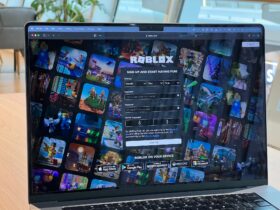Elon Musk’s audacious vision is transforming X, formerly Twitter, into an uncharted territory. Muscat’s reign took an unexpected turn when TweetDeck, now X Pro, got a paywall upgrade this week. This followed an intriguing discovery by The Washington Post — a covert throttling of links to certain sources Musk isn’t keen on, including Instagram and the New York Times. Though the restrictive practice abruptly ceased upon the news report, this development triggered speculation about Musk’s potential disruption to the social networking site’s conventions.
Under Muscat’s leadership, X is morphing into an even more contentious digital battlefield, rooted in an unbridled freedom of expression distinct from its predecessor. However, achieving this without the ‘block’ button, the very feature that has provided respite to users grappling with unsolicited interactions, seems questionable. Musk voiced his disdain for the ‘block’ feature, considering it irrelevant in the modern age last Friday, ruffling feathers across the digital sphere.
The unorthodox approach to user interaction isn’t new to Musk. His public disapproval of Twitter’s ‘block’ feature dates back to June, when he mooted a “stronger form of mute” as a superior alternative. Meanwhile, he bemoaned prolific block lists’ repercussions on Twitter Blue subscribers. Yet, it’s essential to remember that Musk’s history is teeming with grand promises either delayed indefinitely or not executed. Thus, the idea of scrapping the ‘block’ option may be another contentious proposal that may never actually materialize.
The ‘Block’ button’s ubiquity in most social network platforms, including nascent competitors like Bluesky, attests to its utility. It serves as a critical line of defense for users against online harassment and spam, acting as a form of moderation. As Windows Central’s editor-in-chief, Daniel Rubino, emphasizes, the proposed alternative ‘mute’ may theoretically moderate, but it leaves room for muted users to potentially pester you with unwanted comments visible to your community.
Interestingly, Apple and Google’s developer guidelines hint at the necessity of a ‘block’ feature. While Google Play advises developers to include a blocking service for unwelcome user-generated content, iOS offers similar suggestions, albeit ambiguously. In one rejection message, however, Apple bluntly asserts the essentiality of a mechanism to ward off abusive users.
Musk’s idiosyncratic disregard for rules is well-known. However, his past record reveals a certain unwillingness to lock horns with Apple. Whether these digital behemoths might allow a ‘block’-free X onto their app stores remains uncertain.
Musk’s venture into the basic social networking feature’s elimination introduces unseen challenges – technically and socially. His vocal criticism of Twitter’s shaky older code base juxtaposed with the recent slash in the core technical team might imply potential impediments to executing his grand vision. Moreover, tampering with a central component potentially unleashing unforeseen repercussions for a platform already plagued with hefty outages.
In a nutshell, under Musk’s rule, X may traverse a different landscape – one perhaps less restricted yet fraught with unknown nuances. Whether these changes would tread the fine line between freedom of expression and potential harassment remains to be discerned.












